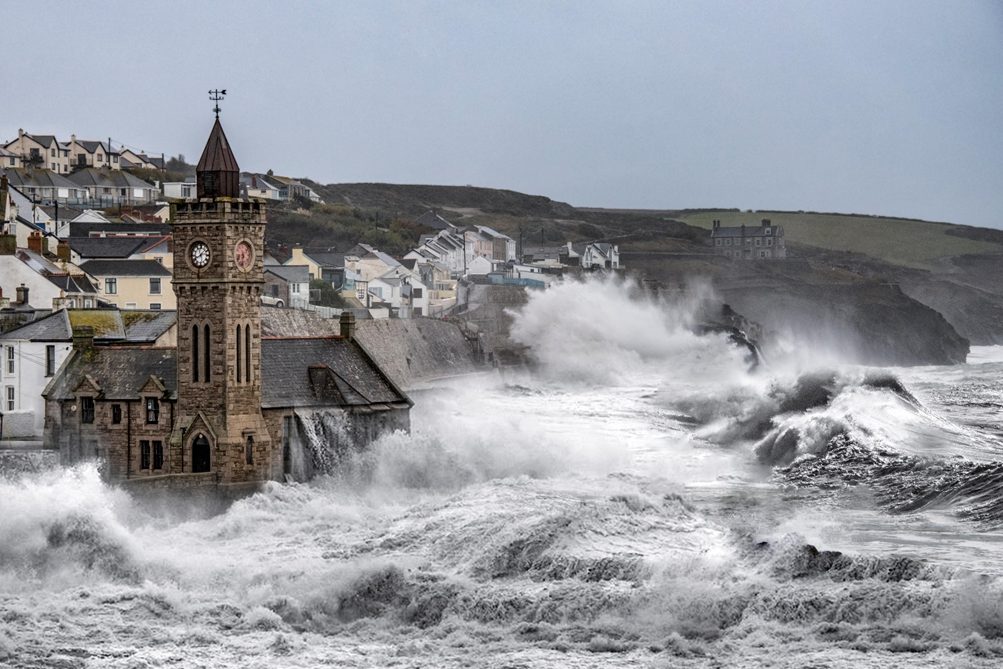
Location: Cornish coastline at Porthleven Harbour, UK
Summary
Human activities lead to an unprecedented warming of the atmosphere, ocean, and land through greenhouse gas (GHG) emissions. This results in sea-level rise, glacier retreat, declining Arctic Sea ice, and the melting of the Greenland ice sheet. Sea-level rise, and the associated increased frequency of extreme events such as floods, tsunami, and hurricanes, poses a significant challenge in the coming century. The extent of sea-level rise depends on the level of GHG emissions, varying across locations and potentially reaching up to 6 meters by 2130 in certain regions. An average projected sea level rise of 1.5 meters within the next century is seen as an optimistic scenario considering current forecasts and global temperature increase. This rise already puts 33 cities, ranging in population up to 40 million, at high risk of submergence. To address these climate change challenges, adaptation strategies such as shore protection, accommodation, and planned relocation are being considered. Governments are developing projects to build shore protection systems in response to the threats of climate change and rising sea levels.
The aim of this project is to develop a sustainable shore protection system that mitigates the impacts of sea-level rise through coastal protection, flood control, and shoreline stabilization. The proposed system is constructed using advanced materials which offer several advantages, including sustainable economic factors such as transportation, time, assembly, and installation advantages. Additionally, the excellent performance and durability of these materials in harsh marine environments make them a cost-effective choice for this application.
General information
- PI: Tara Habibi (CCLab/ IIC)
- Start date: 01.11.2023
- Duration: 6 months